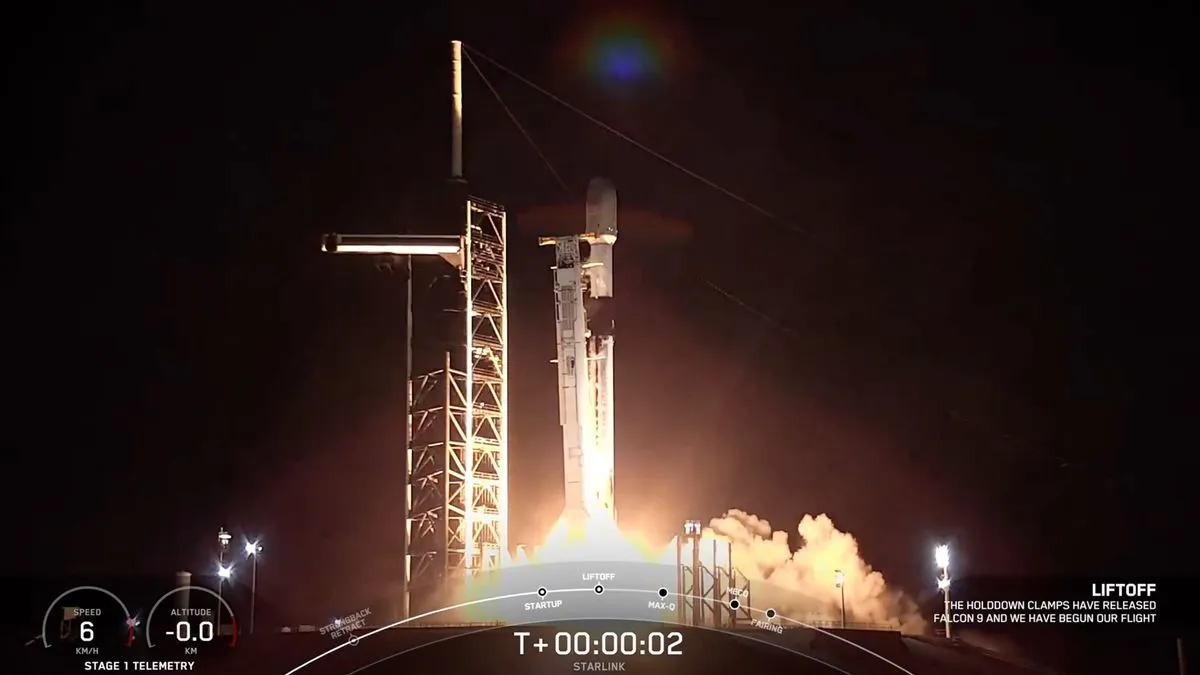
In a remarkable display of aerospace innovation, SpaceX has successfully launched another batch of Starlink wireless internet satellites into orbit. The mission, designated as Starlink 12-17, took place on Saturday night, April 12, from the iconic Nasa Kennedy Space Center (KSC) in Florida, under the glow of a full moon.
The launch occurred at precisely 8:53 p.m. EDT (0053 on April 13 GMT) using a Falcon 9 rocket that lifted off from KSC's historic Launch Complex-39A. This mission featured a payload of 21 Starlink satellites aimed at enhancing the network's capabilities in low Earth orbit (LEO).
Approximately 2.5 minutes into the flight, the Falcon 9's first stage, identified as booster B1083, successfully shut down its nine Merlin engines and separated from the upper stage. This critical maneuver allowed the upper stage to continue its journey into LEO, carrying the valuable satellite payload. About six minutes after stage separation, B1083 executed a landing burn, making a safe touchdown on SpaceX's A Shortfall of Gravitas droneship, positioned in the Atlantic Ocean.
The upper stage of the Falcon 9 continued its ascent, ultimately releasing the 21 Starlink satellites into orbit. Notably, 13 of these satellites are equipped with SpaceX's Direct to Cell technology, designed to eliminate cellular dead zones for mobile devices worldwide. In the United States, SpaceX has established a partnership with T-Mobile to provide this innovative capability to customers, enhancing mobile connectivity across the nation.
About one hour after launch, the newly deployed Starlink satellites began their individual maneuvers to reach their designated orbits, contributing to the ever-growing Starlink megaconstellation. Currently, the Starlink network boasts over 7,000 satellites, operating in a grid that covers nearly every part of the globe, with the exception of polar regions.
With its extensive satellite network, Starlink provides users with low-latency, high-speed internet access from virtually anywhere a satellite signal can be received. The network's growth continues weekly, reinforcing SpaceX's commitment to expanding global connectivity.
Saturday's launch marked SpaceX's 42nd Falcon 9 mission of 2025, with 28 of those missions dedicated to deploying batches of Starlink satellites. This milestone underscores the company's ongoing efforts to enhance internet accessibility and bridge the digital divide.